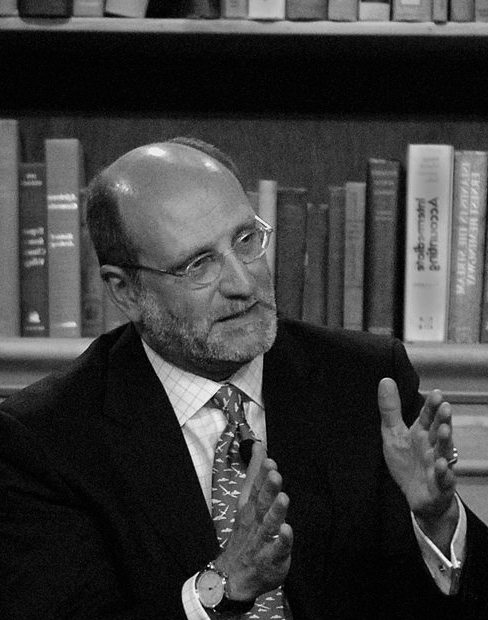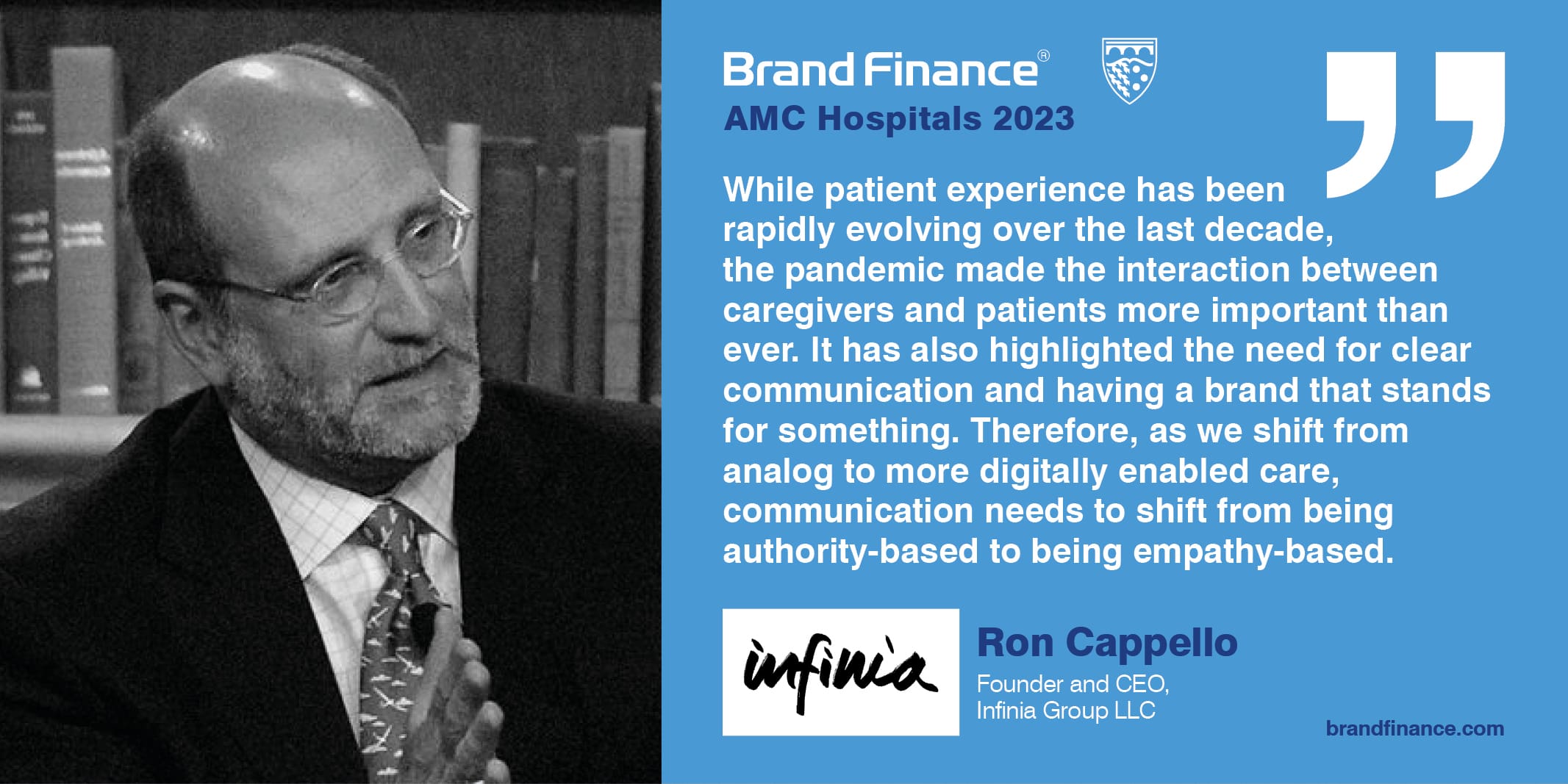This article was originally published in the Brand Finance AMC Hospitals 2023.

Ron Cappello is the founder and CEO of Infinia Group LLC, a leading brand strategy consulting and design firm who has been supporting healthcare clients for 20 years. Brand Finance recently interviewed Ron to get his views on how healthcare has evolved, the impact of technology, and what the future holds for the role brand and communication has on the patient experience and in the recruiting and retention of the next generation of caregivers.
Thank you for spending time with us today. We are looking forward to our conversation and getting a better sense of the role brand, reputation, and communication play in the evolving U.S. healthcare market.
Great to be with you. I’m happy to share my experience and observations on this large, dynamic sector of the U.S. economy with your readers.
As a result of the pandemic, telehealth usage in the past two years has surged faster than anyone could have predicted in 2019. How has this impacted the patient experience and care expectations?
While patient experience has been rapidly evolving over the last decade, the pandemic made the interaction between caregivers and patients more important than ever. It has also highlighted the need for clear communication and having a brand that stands for something. Therefore, as we shift from analog to more digitally-enabled care, communication needs to shift from being authority-based to being empathy-based.
The best digital care will be the care that celebrates the human factor. As interactions become more virtual in nature, visits will be dependent on the patient being heard and more responsibility will fall to caregivers to be present, listen well, and make the experience equal to, or better than, an in-person, office visit. This task is not easy, but it is certainly doable.

How can AMCs become innovators and leaders in telehealth? And what do you view the strategic benefits from this investment to be?
Convenience of access to care is one way that health inequalities can be narrowed, and telehealth has a growing role in making this happen. As the bandwidth and availability of digital service continues to grow, so will the adoption of telehealth. Convenience needs to be matched with, and supported by, credibility: the currency of any partnership. A strong brand is the most effective vessel to hold the key elements of clear communication and memorable engagement.
It seems that healthcare in the U.S. is highly fragmented. How does this have an impact on creating a brand that is built on superior patient experience?
It is certainly fragmented, but this does make for a network of specialists that can deliver great care when they work together with patients. As the digital transformation continues to unfold, information will be shared with ease, and communication will become more central in the delivery of care. The infrastructure still has a way to go, but I’m confident it will get to the point where it makes care delivery more effective and efficient, without losing the important human-factor.

Reputation is essential for driving patient choice and satisfaction. What can AMCs do to build their reputation and continue to grow?
The past decade has seen a great deal of consolidation to create large, unified health systems. This includes the goal of having an academic affiliation and the benefits of research that goes along with that, as well as the reputational halo effect of being associated with a well-known academic brand.
At the same time, smaller healthcare businesses and services are innovating at a fast pace with larger organisations either adopting methods and processes, or simply buying the businesses outright. Examples include Amazon buying One Medical, Walmart and CVS expanding their delivery of services, and companies like Apple placing a focus on easily capturing and sharing personal health data.

How has your service evolved with all the changes in the U.S. healthcare sector?
Our services are grounded in understanding the business realities of our clients. The fact is that the biggest changes have existed in the number of channels marketing and communication messages can be delivered on.
It can be argued that there are too many ways to connect with patients and the consumer, but the people are smart, and they gravitate more to content than they do to channels. Therefore, the importance of being able to define a brand’s positioning and overall strategy has remained remarkably consistent.
In addition, the shift from sick care to a focus on preventative care takes time, but it is making progress. The fact is that the problem of changing behavior is quite complex. You can’t crack a complex problem with a simplistic solution. It requires a sophisticated solution that is simple. It requires engaging with patients in ways that meet them where they are, and that alone requires clear, resonate communications.

